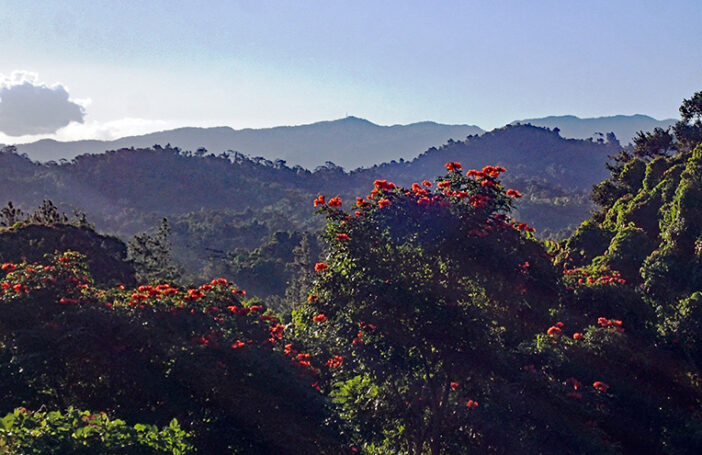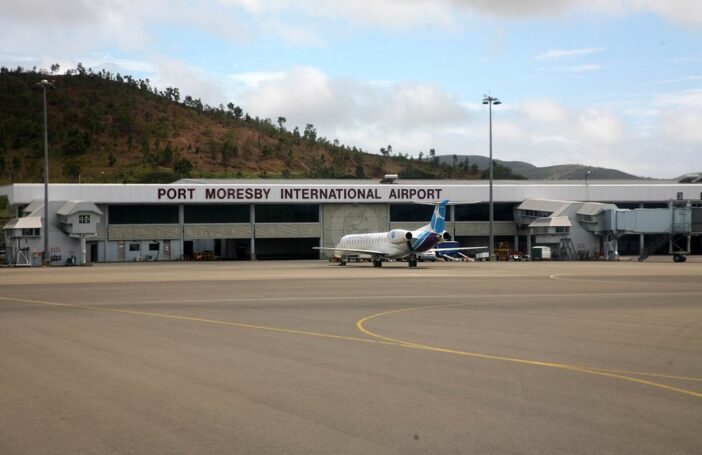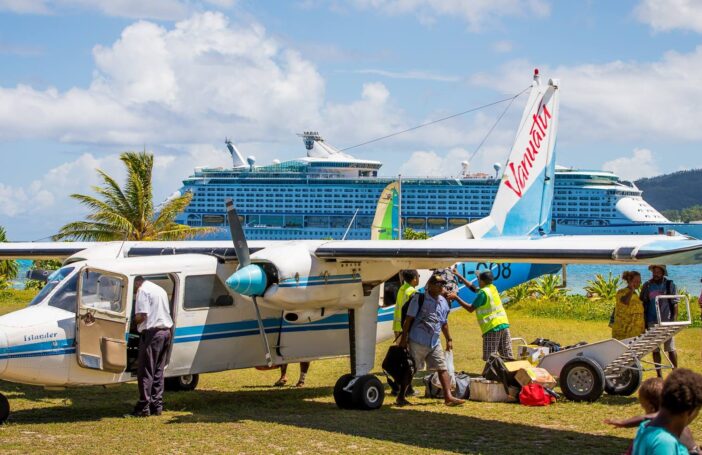The potential importance of tourism to Timor-Leste has been discussed since before its independence in 2002. Clichés about the half-island being ‘untouched’ or a ‘tropical paradise’ aside (it is far more interesting and complex for either term), its mountains are spectacular, its coral reefs world-class and its diverse landscapes and cultures a draw for adventurous people everywhere.
And yet, thus far, the visitors have not arrived in large numbers. In the March quarter of 2017, Timor-Leste received around 30,000 visitors, up 12.4% on the previous year. This data needs to be taken with a grain of salt – many of these visitors, half of whom were from Indonesia, would have been travelling for business or family purposes rather than tourism as such.
One partial explanation for this is likely an image problem. For her 2016 PhD at Swinburne University, Sara Currie surveyed 316 Australians who had never visited Timor-Leste. One, who commented, ‘I don’t holiday in war zones’, conveyed an attitude that was fairly typical.
Efforts by outside actors to facilitate the development of tourism in Timor-Leste have mostly focused on countering this perception. The nation’s official tourist website, set up on behalf of its government by the Australian government funded Market Development Facility, does an excellent good job of showing what the country has to offer.
Ultimately, however, foreign funded or managed activities designed to promote Timor-Leste, though well intended, are of limited use without serious initiative on the part of local actors to address basic issues relating to transport and visas.
Three events that have occurred over the few months are relevant in this regard.
The first is that, on 16 April 2019, the then interim Minister of the Interior, Filomeno Paixão, announced that from 1 May visas on arrival would no longer automatically be available for purchase at Dili airport. Instead prospective tourists would have to first ‘apply for a Visa Authorization Application at the Timor-Leste Embassies and Consulates’. This would be a very effective way of convincing anyone considering going diving in Dili to go to Labuan Bajo instead. It is still up on the website, albeit with a highlighted note underneath saying its implementation has been suspended, for now.
As it happens this requirement has been enforced for years on Timor-Leste’s land borders, where travellers are usually turned back (although not always, people who ask very nicely have occasionally been known to get through) if they don’t have an ‘authorisation letter’ from the consulate in Kupang. The backpacker hostel there has a line in providing succour to disconsolate travellers who wanted to #ExploreTheUndiscovered only to discover that don’t have the paperwork.
If Timor-Leste’s leaders are as serious about developing a tourist industry as its official policy, (‘developed with financial support from the Government of New Zealand delivered through the International Labour Organisation and a consulting firm, Destination Human Capital’) suggests, this is not good enough. The authorisation letter needs to go. Visas need to be available at all ports of entry. While concerns about various sorts of smugglers are legitimate, they can be addressed without smothering a nascent source of national income in the cradle.
Developing a tourist industry in Timor-Leste will also require a realistic vision of what it will look like. A distinct lack of realism was in evidence at the recent USAID sponsored conference, ‘Peace Harmony and Fellowship: Faith-based Tourism Development’. Taking place around the same time as the government was toying with making it more difficult to buy a tourist visa at Dili airport, religious leaders made a ‘pact’ to ‘cooperate in developing religious tourism’. A senior cleric told a Catholic news outlet that, due in large part to a fragment of St Anthony’s finger allegedly being preserved in Manufahi district, Timor-Leste might become ‘one of the world’s destinations for pilgrims’.
While sites related to Timor-Leste’s half-millennia old and often syncretic Catholicism would be interesting to pious travellers (although not unique – Larantuka, Malacca, Goa, Maucau and Manila all compete for the same limited market, and plane tickets to Rome and Jerusalem aren’t as expensive as they once were), they need to be able to get to the country first. At the moment this is only possible by flying from Kupang, Darwin or Denpasar.
The third recent development of note is an example of Timorese taking the lead in changing this. While the details are still emerging it appears that ex-president Jose Ramos Horta has succeeded in securing the agreement of a Chinese company, Air Travel, to operate flights between Dili and Hong Kong. If both pan out, Timor-Leste will be much more accessible to travellers than before.
The key to developing a tourist industry in Timor-Leste is access. Without it any talk of eco or ‘faith based’ tourism is empty, and no number of advisors, consultants, glossy English language reports or promotional videos can change that. With it there is every reason to believe that tourist numbers will begin to grow more or less organically. The recent establishment of new air connections is a great step. It can only be hoped that more are to come, and those who make Timor-Leste’s visa policy are ready to seize, rather than stifle, the opportunity.
*Correction (26 June 2019): The article states “The nation’s official tourist website, set up on behalf of its government by the Australian government funded Market Development Facility.” In fact, the nation’s official tourism website was funded by a number of donors, including the Australian Government’s Department Foreign Affairs and Trade, International Labour Organisation, the New Zealand Ministry for Foreign Affairs and Trade, and The Asia Foundation.






Why can’t these issues just get fixed?!! Is thinking in Portuguese the problem?
I see absolutely no reason why it would be. If anything I think it’s fairer to be skeptical of the role played by consultants who think (and write) in English. But fascinating as debates over the Sapir-Whorf hypothesis might be, they have no real relevance to the issue of tourism policy in Timor-Leste.
https://www.scientificamerican.com/article/does-your-language-influence-how-you-think/
The ‘resource curse’ might be a more useful framework to understand some of TL’s struggles with diversifying its economy, although even then it’s not that simple.
https://www.theatlantic.com/international/archive/2012/04/why-natural-resources-are-a-curse-on-developing-countries-and-how-to-fix-it/256508/
The article mentions direct flights to Dili from Hong Kong, of which Macau is in easy reach as well as Greater China, but none at all about those from Singapore, which ended after nearly eleven years – this was not Air Timor’s fault, as Singapore Airlines is looking to integrate Silk Air into the parent company. Perhaps the new Chinese-backed company could operate the Singapore-Dili route.
The visa authorisation thing is a disgrace – it was bad enough when it was introduced at the border, meaning that visitors caught short had to go back to Kupang and then fly into Dili from Denpasar, but ending visa on arrival at Dili airport is ridiculous.
As to the new international airport in Oecussi, it has white elephant written all over it – a greater priority should have been expanding Dili airport runway or developing Baucau airport, the only one in the country able to handle large long-haul aircraft. It could be to Timor Leste what Nadi airport is to Fiji.
I agree about cost of toursim in Timor Leste. I was there last week on holiday myself as a long time activist supporter. Another problem is that boats to Atauro have reduced and so ecotourism is suffering. We had hoped to spend 2-3 nights on Atauro but due to lack of boat transport I had to be content with a day trip on the Saturday ferry. There is huge potential in marine tourism but much more infrastructure and more supportive and strong regulatory environment needed to realise it so that Timor can actually benefit from it.
Banking is also an issue: it was reported some time back that Mastercard (which wasn’t all that widely accepted, but at least could be used for some major expenses like hotel bills and rental cars) is no longer able to be used in Timor-Leste. In addition, the ANZ ATMs which were a mainstay for years for getting cash are no longer there (or so I understand) since the local ANZ bank moved out of personal banking. And it is really, REALLY difficult to get accurate and reliable official information on what international cards are now usable in what ATMs. That in itself would be enough to put off plenty of potential tourists.
The issue of doing away (and then not doing away) with visas on arrival, discussed in the article, was a classic example of failure of whole-of-government policy making in relation to tourism. Not only was it a bad idea, but it was on the point of being very badly implemented. Vietnam, Cambodia and Myanmar, for example, have such a requirement, but they also have processes for applying and paying online, which didn’t seem to be part of the Timor-Leste plan. The Timorese embassies abroad didn’t seem to have been well briefed, and there was some suggestion that applicants would need to send in bank statements (!) with their applications. And there was different information to be found on different websites. Just how the requirement might have affected, for example, former UNAMET staff in Africa minded to return for the much-trumpeted anniversary of the 1999 popular consultation doesn’t seem to have crossed anyone’s mind, nor was it clear what rules would apply to people coming onshore from cruise ships, and so on, and so on.
Flights are only part of the problem. I’ve been to Timor-Leste dozens of times, lived there for several months at one point, and will keep going back to see my friends, despite the problems. But if I didn’t have that history, I suspect the challenges under discussion here would have been quite enough to take it off my bucket list.
A very flash new airport opened this month in the enclave of Oecusse. Currently only serviced by a small domestic flight from Dili but hopefully international connections at some point soon.
Just to note, the agreement for Air Travel flights from Hong Kong is far from being signed, sealed and delivered. It is one of many options being pursued, but has not even got close to consideration by the regulator, AACTL, as yet. Air access is critical to the development of tourism in Timor-Leste, and currently a significant issue due to both lack of flights and ticket prices. The Governance for Development program is working closely with the Government of Timor-Leste, as well as the various tourism programs here, to identify and objectively assess options for improvements on both fronts.
Hi Carolyn,
You’re absolutely spot on in regards to flights from HK as well as the overall accessibility issues. My company is presently working on various flight routes into Dili. You mentioned the Governance for Development program. I would like to know more about it in the hope that we can tap into their efforts and resources. Would you be in the know and be of help? Thanks.
RJ
PS. Also, please check out the new CitiLink flights (from Jakarta) to the new international airport at Oecusse. The government is also in the process of seeking additional flights from Australia and Hong Kong to the new airport.
https://www.thejakartapost.com/news/2019/06/21/after-oecusse-airport-wika-eyes-more-timor-leste.html
These academic policy ‘opinions’ pieces are always interesting – and food for thought. But always fruitful too to get the perspective of government and also, development partners. In this case, the USAID’s US10M ‘Tourism for All’ program, which is very much trying to address these critical tourism access, connectivity and mobility issues. Also, two weeks ago, TransNusa airlines began operating international flights from Kupang, the capital city of East Nusa Tenggara Province, to Dili, the capital city of Timor Leste.
It’s not just the connection from various places that is an issue in terms of tourism development, Timor-Leste is an expensive place to stay, hotels are pretty expensive even though the quality of hotel infrastructure is poor, apart from few hotels in Dili. Beaches like One Dollar sandy beach or Cameo pebble beach are marvellous but access to facilities is limited, one can only hope that with increased tourism it will improve. Travelling outside of Dili is equally problematic due to poor infrastructure, and very few and expensive places to stay. Hiring a car and a knowledgeable driver, unless you know one through friends, is a challenge, add overcharging and asking for a different price afterwards in this mix, and it is never impressive. The country has so much to offer – not just religious tourism, but natural beauty, scuba diving or snorkeling, and limestone art work in Jaco. The price does not match the experience and high end tourists hardly come this way for this reason, while middle level tourism is way cheaper in other Asia Pacific countries.
I visited East Timor in 2014 through the Catholic Church. The trip was made easy for me because I had the necessary connections to do home stays with priests, who were well established and supported by the international Church. While I was looked after, let me give you a few reasons why the average tourist would not fare well in Timor.
-The driving along the main coastline loop that wraps around the country (the road that connects most of the country), is treacherous. At times, it is nothing but a dirt road. You cannot do it without a properly kitted out 4WD, and they are very expensive to hire in Dili. The cost of travel alone for a tourist is incredibly prohibitive.
-You also need a driver who has the necessary skills to manage the roads (unless you yourself are capable), and you definitely need a guide with you because there is very little in way of street signs in Timor.
-Public transport when travelling the coastal loop consists of small mini-buses. They are often overcrowded (people will even ride on top of them) and are not for the faint of heart. The capital is fine for public transport in so far as taxi’s goes, but forget travelling anywhere else without the aforementioned 4WD unless you’re game enough to try the mini-buses.
-Tap water is not safe anywhere in the country, and that’s if you can find a running tap. The infrastructure in a large portion of the country consists of cement block and straw hut homes with no, or very little, running electricity and water.
-Infrastructure just in general, outside of the capital, is virtually non-existent.
-Timor is the one place you would not want to get sick or injured. There is a serious lack of medical care available.
-Hotels outside of the capital Dili, and the old capital Baucau, are very hard to come by. Tourists are limited by lack of suitable accommodation.
Forget about Timor as a tourist destination in its current state. The basic issues of accommodation, access, lack of infrastructure and general safety from a medical standpoint need addressing. Until these basic necessities are addressed, the tourist industry will remain dead.
Here’s a little experiment you can do. Go online and try to organise a holiday to East Timor, visiting various locales around the country. Ask yourself these questions:
Where will you stay?
Where will you eat?
How will you get around?
Try to answer these simple questions, and you will soon see why Timor cannot accommodate tourists (outside of the capital).
Thanks for the concise summary Michael. Having travelled to Dili in 2015 for some Diving, I can attest to the potential Timor has in regards to tourism.
Without knowing too much locally about the Timorese economy, Gov regulation and monopolies, I would also hazard a guess that the issues facing TL also include:
– No access/supply for budget airlines from either Australia or Malaysia. As discussed: https://asia.nikkei.com/Life-Arts/Life/East-Timor-tourism-remains-stuck-in-the-slow-lane2
-Lack of coordinated social media/influencer led campaigns to expose Timor.
We have been involved with ‘East Timor’ since before independence and my partner was very involved so we had a commitment to spend our Xmas holidays there 2 years ago. It was a very expensive 3 weeks and we travelled from Dili to the town of the Balibo 5 to Jako Island, stayed in beautiful Pousadas. It is a beautiful country and it was very special to be there for Christmas experiencing local simple celebrations and beautiful hymns by local church groups, and we are not even Christians.
There are many who just could not afford a holiday in Timor, the US$ makes it a very expensive trip and everything is more expensive than even in Australia including the one hour flight from Darwin to Dili. To go to Jako Island the self-drive car hire was US$180 per day, in Bali hiring a car is around AUD$40 – so cost is one of the main reasons, and lack of services to support tourists is the other reason.
And dont forget that prices for flights from Dili to Bali have tripled from around $100 USD to over $300 USD for 1 way ..one of the most expensive flights per KM in the region!